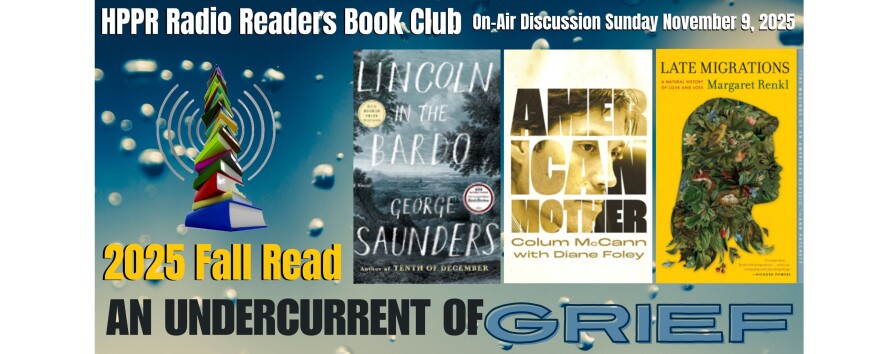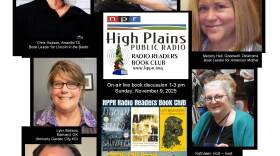This book may contain language, sexual content, and themes of grief and loss, which may be challenging for some readers. Reader caution advised.
How Can We Bear Our Grief?
by Mildred Rugger
Hi, everyone. This is Mildred Rugger from Canyon, Texas, for the 2025 Fall Read of HPPR Radio Readers Book Club.
In my third book byte on Late Migrations: A Natural History of Loss and Love by Margaret Renkl, we explored the idea of loss. So, now—in my fourth and final book byte—we come to a key question: How can we bear our grief? How can we find comfort? Margaret seems to suggest that the way forward is to wonder at the beauty of life and love.
In the essay “Blood Kin” (pp. 18-19), Margaret places the heartache of her miscarriages in the immediate context of the love of her grandmother and the broader context of the love of her mother, grandmother, and great-grandmother. In the next essay, Margaret summarizes some observations of nature with this statement: “This life thrives on death.” Yet, the very next sentence begins a beautiful invitation to wonder (“Nests,” pp. 20-21):
| But hold very, very still in the springtime sun, and a tufted titmouse will come to harvest your hair and spin it into a soft, warm place for her young. . . . Hear the bluebirds calling from the trees, and you might turn in time to see a fledgling peer from the hole in the dark nest box, gape at the bright wide world for the very first time and then trust itself to the sky. Wait at the window on the proper day, and the cottontail nest hidden under the rosemary bush will open before you, spilling forth little rabbits who . . . raise their ears and wrinkle their noses and bend for their first taste of the bitter dandelion. And it will be exactly what they wanted. |
Finally, in the essay “After the Fall” (p. 218), Margaret has some wise words about grief.
Here is what no one told me about grief: you inhabit it like a skin. Everywhere you go, you wear grief under your clothes. . . . And like your other skin, . . . it too will change in time. It will change so slowly you won’t even see it happening. . . Time claims you: your belly softens, . . . the skin on the top of your hand goes loose as a grandmother’s, and the skin of your grief, too, will loosen, soften, forgive your sharp edges, drape your hard bones. . . . There is nothing to fear. There is nothing at all to fear. Walk out into the springtime, and look: the birds welcome you with a chorus. The flowers turn their faces to your face. The last of last year’s leaves, still damp in the shadows, smell ripe and faintly of fall. |
This is Mildred Rugger for HPPR Radio Readers Book Club, wishing us all a growing awareness of the beauty of life, even in the midst of grief.










